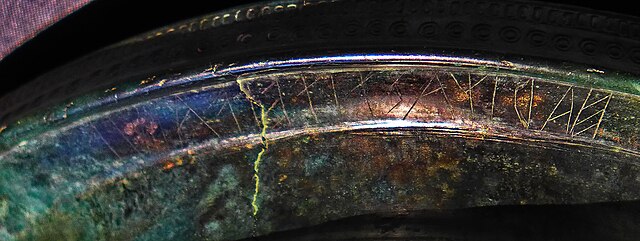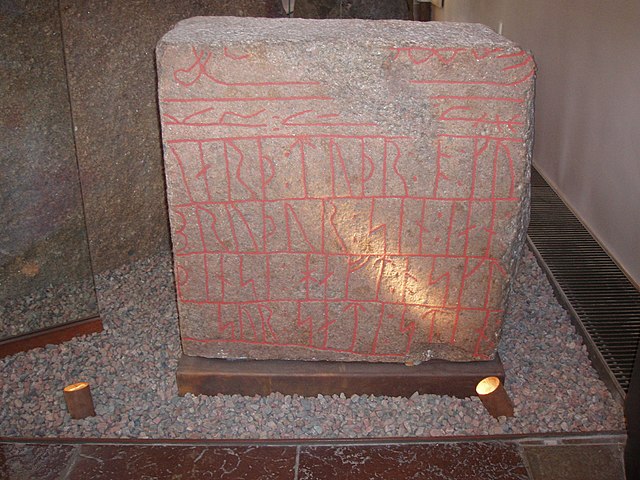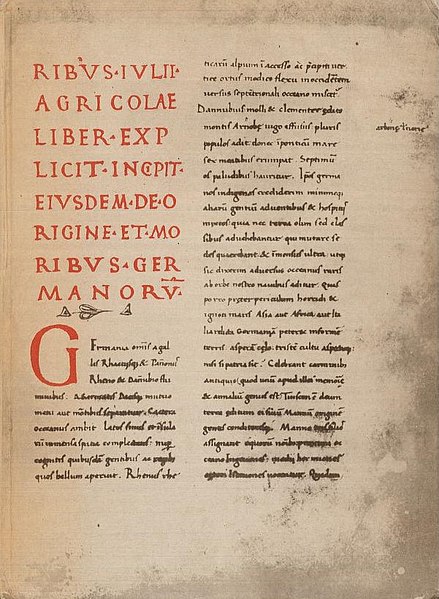Thor is a prominent god in Germanic paganism. In Norse mythology, he is a hammer-wielding god associated with lightning, thunder, storms, sacred groves and trees, strength, the protection of humankind, hallowing, and fertility. Besides Old Norse Þórr, the deity occurs in Old English as Þunor ("Thunor"), in Old Frisian as Thuner, in Old Saxon as Thunar, and in Old High German as Donar, all ultimately stemming from the Proto-Germanic theonym *Þun(a)raz, meaning 'Thunder'.
Thor's Fight with the Giants (Tors strid med jättarna) by Mårten Eskil Winge (1872).
Altar stone for Hercules Magusanus from Bonn, dated 226 AD.
Boniface bears his crucifix after felling Thor's Oak in Bonifacius (1905) by Emil Doepler
16th-century depiction of Norse gods from Olaus Magnus's A Description of the Northern Peoples; from left to right, Frigg, Thor and Odin
Germanic paganism or Germanic religion refers to the traditional, culturally significant religion of the Germanic peoples. With a chronological range of at least one thousand years in an area covering Scandinavia, the British Isles, modern Germany, and at times other parts of Europe, the beliefs and practices of Germanic paganism varied. Scholars typically assume some degree of continuity between Roman-era beliefs and those found in Norse paganism, as well as between Germanic religion and reconstructed Indo-European religion and post-conversion folklore, though the precise degree and details of this continuity are subjects of debate. Germanic religion was influenced by neighboring cultures, including that of the Celts, the Romans, and, later, by the Christian religion. Very few sources exist that were written by pagan adherents themselves; instead, most were written by outsiders and can thus present problems for reconstructing authentic Germanic beliefs and practices.

A 5th or 6th-century C-type bracteate (DR BR42) showing a figure, likely Odin, above a horse with dislocated legs. This may refer to Odin's healing of Baldr's horse in the Second Merseburg Charm and was likely a talisman.
The B inscription on the Negau helmet, c. 450-350 BCE. This inscription may be the earliest attestation of the name of the Germanic god Tyr's name.
Sønder Kirkeby runestone I (c. 1000). The inscription calls on Thor to hallow something unspecified.
The opening page of the Codex Aesinas of Tacitus's Germania, which gives a large amount of information on Roman-era Germanic religion.








